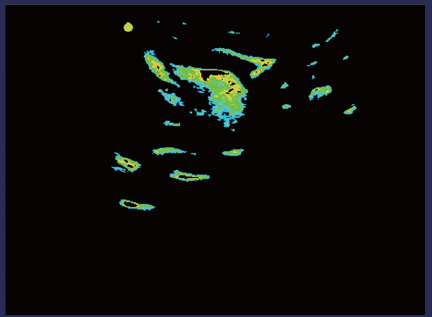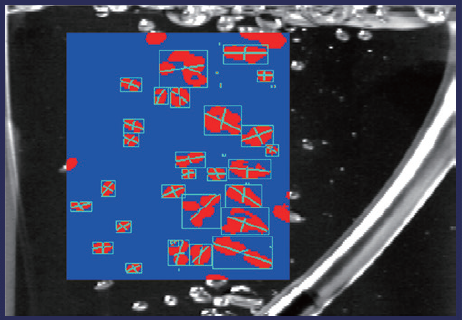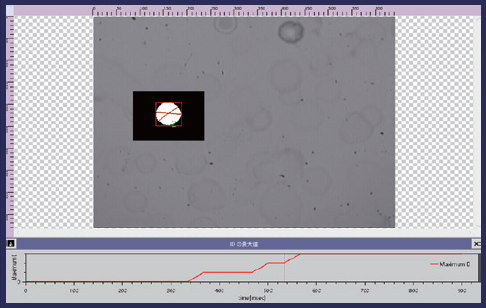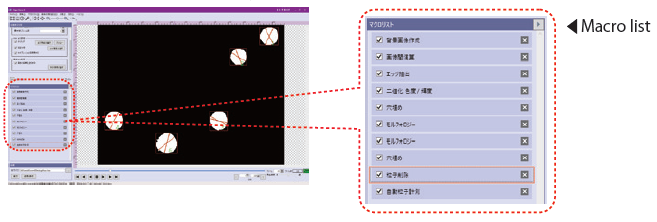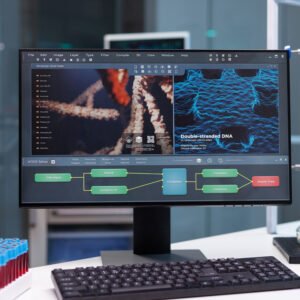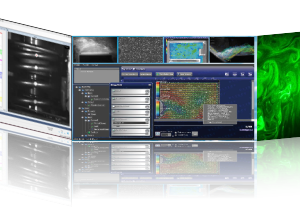Description
Understanding DIPP-Macro II: Features and Functionality
DIPP-Macro II is a sophisticated particle image analysis software designed to provide comprehensive tools for researchers and professionals working with particle systems. One of its core features is advanced thresholding capabilities, which enhance the ability to selectively analyze particles from complex images. This function enables users to define the minimum and maximum thresholds, effectively isolating objects of interest from the background noise.
In addition to thresholding, DIPP-Macro II employs robust object detection algorithms that accurately identify and locate particles within the analyzed images. This capability is essential for studies requiring high precision in particle identification, especially in scientific research. The software also supports particle size analysis, providing quantifiable metrics that are crucial for data-driven studies. These measurements can be integral in applications ranging from material science to biological research.
Furthermore, DIPP-Macro II offers support for both pseudo color and grayscale image processing, allowing users to apply various color maps and grading techniques that aid in the visual differentiation of particles. The software excels in visualizing data through methods such as binarization, labeling, and enhancement processing, which not only enhances particle visibility but also improves the analysis workflow.
Automated measurements within DIPP-Macro II streamline the data collection process, facilitating efficient analysis without compromising accuracy. The software includes graphing features that allow users to generate visual representations of their data, aiding in the interpretation of results. Notably, the software also incorporates user-friendly functionalities like real-time previews and straightforward setting adjustments, making it accessible for users at various levels of expertise. This combination of features designates DIPP-Macro II as a versatile and powerful tool for anyone engaged in particle image analysis.
Optimizing Your Analysis with DIPP-Macro II: Practical Applications
DIPP-Macro II stands out as a sophisticated tool for particle image analysis, optimizing experimental outcomes and enhancing data comprehension. Designed to cater to various research needs, the software provides users with the ability to filter, sort, and analyze particle data with remarkable precision. This capability not only accelerates the analysis process but also leads to a more nuanced understanding of the particles being studied, which is crucial in various scientific domains.
A key feature of DIPP-Macro II is its flexible macro list, which allows users to easily modify the processing sequence. By customizing the workflow, researchers can tailor their analyses to the specific requirements of their experiments. This flexibility is vital for optimizing results, especially when dealing with complex datasets that require specific filtering criteria or sorting parameters. Users appreciate the ease with which they can adjust the macros to meet their investigative goals, leading to outcomes that are both accurate and meaningful.
Furthermore, DIPP-Macro II facilitates the exportation of results in multiple formats such as CSV files, videos, and graphical representations. This feature significantly enhances data sharing among colleagues, easing collaboration and presentation of findings in both academic and professional settings. The various export options ensure that researchers can communicate their results comprehensively, allowing for better visualization and understanding of composite data.
Real-world applications underscore the value of DIPP-Macro II. For instance, researchers in materials science have utilized the software to analyze particle distributions in composite materials, leading to better insights into material properties. Similarly, in the field of microbiology, scientists have applied DIPP-Macro II to assess microbial colony sizes, contributing to more informed studies about growth patterns. Such examples illustrate the software’s versatility, making it an essential tool for improving experimental analysis and fostering deeper data understanding.

